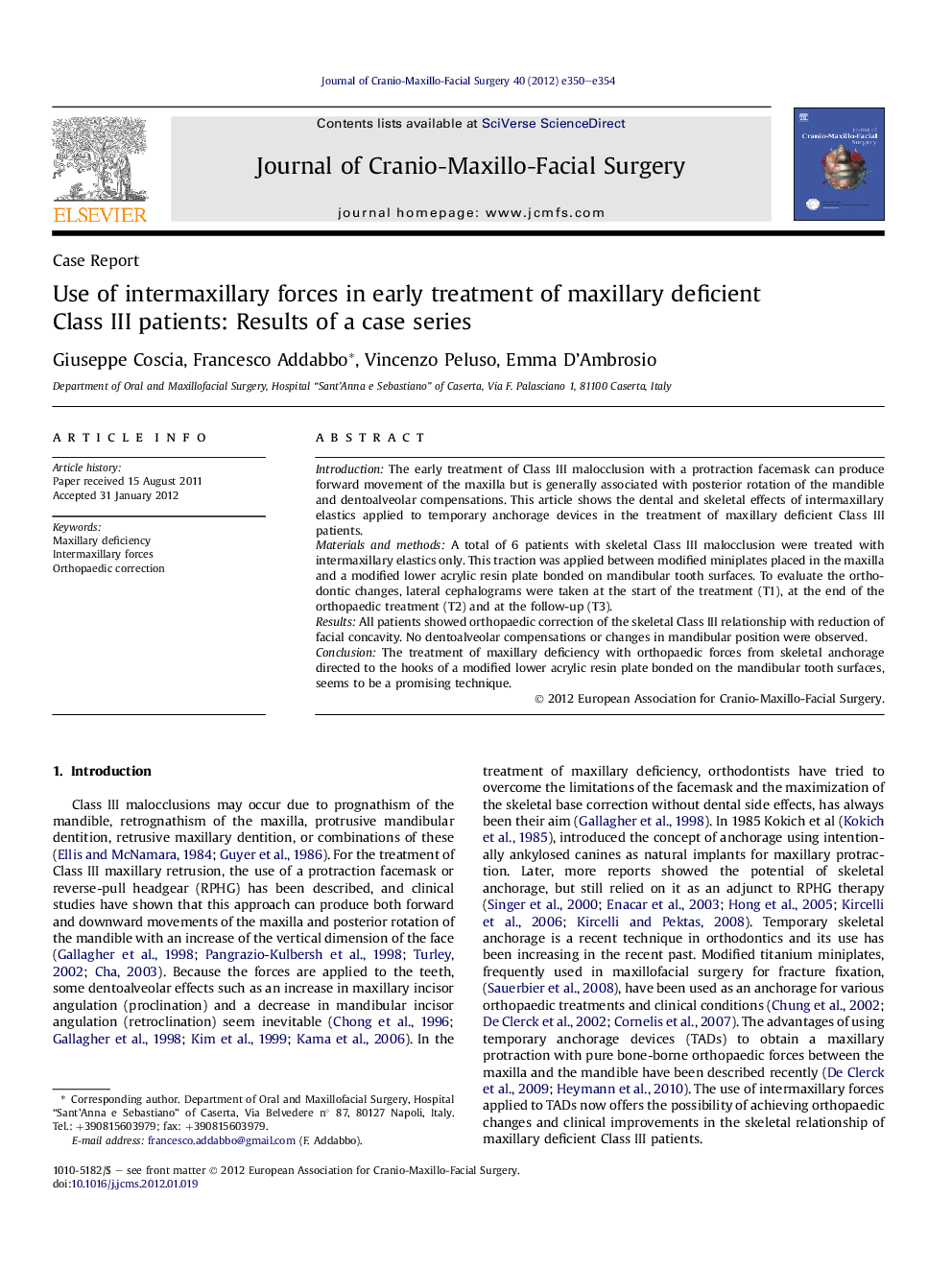| Article ID | Journal | Published Year | Pages | File Type |
|---|---|---|---|---|
| 3143415 | Journal of Cranio-Maxillofacial Surgery | 2012 | 5 Pages |
IntroductionThe early treatment of Class III malocclusion with a protraction facemask can produce forward movement of the maxilla but is generally associated with posterior rotation of the mandible and dentoalveolar compensations. This article shows the dental and skeletal effects of intermaxillary elastics applied to temporary anchorage devices in the treatment of maxillary deficient Class III patients.Materials and methodsA total of 6 patients with skeletal Class III malocclusion were treated with intermaxillary elastics only. This traction was applied between modified miniplates placed in the maxilla and a modified lower acrylic resin plate bonded on mandibular tooth surfaces. To evaluate the orthodontic changes, lateral cephalograms were taken at the start of the treatment (T1), at the end of the orthopaedic treatment (T2) and at the follow-up (T3).ResultsAll patients showed orthopaedic correction of the skeletal Class III relationship with reduction of facial concavity. No dentoalveolar compensations or changes in mandibular position were observed.ConclusionThe treatment of maxillary deficiency with orthopaedic forces from skeletal anchorage directed to the hooks of a modified lower acrylic resin plate bonded on the mandibular tooth surfaces, seems to be a promising technique.
